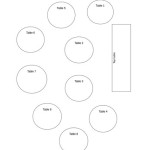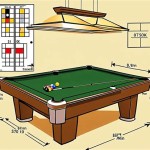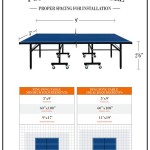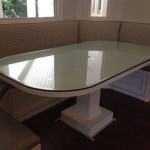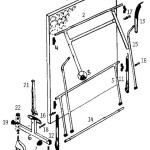Benches For Kitchen Tables: A Comprehensive Guide
The selection of appropriate seating for a kitchen table is a crucial aspect of interior design, influencing both functionality and aesthetics. While chairs remain a popular choice, benches are increasingly recognized for their versatility, space-saving qualities, and ability to foster a more communal dining experience. This article explores the advantages of using benches with kitchen tables, considering various factors such as style, materials, sizing, and practical implications.
Space Optimization with Kitchen Benches
One of the most compelling reasons to opt for benches instead of chairs is their capacity to optimize space. In smaller kitchens or dining areas, benches can be positioned along a wall, effectively creating a banquette-style seating arrangement. This configuration minimizes the floor space occupied compared to individual chairs, which require room for maneuvering and pulling out. A well-placed bench can free up valuable square footage, making the kitchen feel less cramped and more open.
Furthermore, benches often allow for more flexible seating arrangements. While chairs typically accommodate one person each, a bench can comfortably seat multiple individuals, adjusting to the number of diners. This adaptability is particularly beneficial for families or those who frequently entertain guests. The ability to squeeze in an extra person or two on a bench can be a significant advantage when space is limited.
Additionally, many benches incorporate storage solutions. Benches with built-in drawers or lift-up seats provide discreet storage for kitchen essentials such as placemats, napkins, or even cookbooks. This dual functionality makes benches a practical choice for maximizing space in smaller kitchens where storage is at a premium.
Aesthetic Versatility of Kitchen Benches
Beyond their space-saving benefits, benches offer a wide range of aesthetic options that can complement various kitchen styles. From rustic farmhouse to modern minimalist, there is a bench design to suit virtually any decor. The choice of materials, finishes, and detailing allows for seamless integration with the overall kitchen design or the creation of a striking focal point.
Wooden benches are a classic choice, offering warmth and natural beauty. Different wood types, such as oak, maple, or walnut, provide varying tones and grains, allowing for customization to match existing cabinetry or flooring. Painted wooden benches can add a pop of color or create a more traditional, cottage-style feel. Conversely, benches crafted from metal, such as steel or wrought iron, lend a more industrial or contemporary aesthetic.
Upholstered benches provide an added layer of comfort and sophistication. The choice of fabric, ranging from durable canvas to luxurious leather, allows for further personalization. Upholstery can also soften the overall look of the bench, making it more inviting and comfortable for extended periods of sitting. Patterns and textures can be incorporated to add visual interest and complement existing textiles in the kitchen.
The style of the bench itself can also significantly impact the overall aesthetic. Backless benches offer a clean and minimalist look, while benches with backs provide added support and can contribute to a more formal dining setting. Details such as turned legs, carved accents, or decorative nailhead trim can further enhance the bench's visual appeal.
Practical Considerations for Choosing a Kitchen Bench
When selecting a bench for a kitchen table, several practical considerations should be taken into account to ensure a comfortable and functional dining experience. The height of the bench should be appropriate for the table, allowing for comfortable legroom and a natural posture. Ideally, the bench seat should be approximately 12 inches lower than the tabletop. This ensures that diners can easily reach their food and sit comfortably without feeling cramped.
The length of the bench should also be carefully considered in relation to the size of the table. The bench should be long enough to accommodate the intended number of diners without overcrowding. It is generally recommended to allow at least 24 inches of space per person to ensure comfortable seating. However, this may vary depending on the size of the individuals and the overall design of the bench.
The material of the bench should be durable and easy to maintain, especially in a kitchen environment where spills and messes are likely to occur. Wooden benches can be sealed with a protective finish to prevent staining and water damage. Upholstered benches should be treated with stain-resistant coatings or covered with easy-to-clean fabrics. Consider the overall durability of the material and its ability to withstand daily wear and tear.
Comfort is another crucial factor. While benches may not offer the same level of individual support as chairs, they can still be made comfortable with the addition of cushions or padding. Upholstered benches are inherently more comfortable than hard wooden benches. Adding a cushion to a wooden bench can significantly improve its comfort and make it more appealing for longer meals. Consider the overall comfort of the bench and its suitability for the intended use.
Accessibility is also important, particularly for individuals with mobility issues. Benches without backs may be easier to get in and out of than benches with backs, especially for those who have difficulty navigating around obstacles. Consider the accessibility of the bench and its suitability for all members of the household.
Finally, the overall safety of the bench should be assessed. Check for sharp edges, loose screws, or any other potential hazards. The bench should be sturdy and stable, capable of supporting the weight of multiple individuals. Ensure that the bench meets all relevant safety standards and is suitable for use in a kitchen environment.
In addition to these factors, consider the maintenance requirements of the bench. Wooden benches may require periodic polishing or refinishing to maintain their appearance. Upholstered benches may need to be professionally cleaned to remove stains and dirt. Choose a bench that is easy to clean and maintain to ensure its longevity and beauty.
Benches are often perceived as a less formal seating option compared to chairs. This can be an advantage in creating a relaxed and inviting atmosphere in the kitchen. For more formal dining occasions, consider pairing the bench with a few carefully selected chairs to create a balanced and visually appealing arrangement. The combination of benches and chairs can provide both functionality and aesthetic appeal, catering to different needs and preferences.
The choice between a bench and chairs ultimately depends on individual preferences, the size and layout of the kitchen, and the desired aesthetic. Benches offer a unique combination of space-saving functionality, aesthetic versatility, and communal seating, making them a compelling alternative to traditional chairs. By carefully considering the factors outlined in this article, individuals can make an informed decision and select a bench that complements their kitchen table and enhances their dining experience.
The material from which a kitchen bench is constructed plays a critical role in its durability, aesthetic appeal, and ease of maintenance. Hardwoods like oak, maple, and walnut are popular choices for their robustness and natural beauty. Softwoods such as pine are more affordable but may be less resistant to scratches and dents. Metal benches offer a modern, industrial aesthetic and are generally very durable. The choice of material should be based on the desired style, budget, and level of maintenance required.
The finish applied to a kitchen bench can significantly impact its appearance and protection. A clear coat of varnish or lacquer can enhance the natural grain of the wood while providing a protective barrier against moisture and stains. Painted finishes can add color and personality to the kitchen, but may require occasional touch-ups to maintain their appearance. Consider the type of finish and its suitability for the intended use of the bench.
The design details of a kitchen bench can further enhance its aesthetic appeal. Turned legs, carved accents, and decorative nailhead trim can add character and visual interest. Consider the overall design of the kitchen and select a bench with details that complement the existing decor. Simple, minimalist benches are often a good choice for modern kitchens, while more ornate benches may be suitable for traditional kitchens.
The dimensions of a kitchen bench are critical to its functionality and comfort. The height of the bench should be appropriate for the table, allowing for comfortable legroom and a natural posture. The length of the bench should be sufficient to accommodate the intended number of diners without overcrowding. The depth of the bench should be comfortable for sitting and should provide adequate support.
The weight capacity of a kitchen bench is an important consideration, especially for larger families or those who frequently entertain guests. Check the manufacturer's specifications to ensure that the bench can safely support the weight of multiple individuals. A sturdy construction and durable materials are essential for ensuring the bench's longevity and safety.
The storage capacity of a kitchen bench with built-in storage is a valuable asset, especially in smaller kitchens. Benches with drawers or lift-up seats provide discreet storage for kitchen essentials such as placemats, napkins, or cookbooks. Consider the amount of storage space required and select a bench with adequate storage capacity.
The ease of assembly of a kitchen bench is an important consideration for those who prefer to assemble furniture themselves. Check the manufacturer's instructions and ensure that all necessary hardware and tools are included. A well-designed bench should be easy to assemble and should come with clear and concise instructions.
The warranty offered on a kitchen bench provides assurance of its quality and durability. Check the manufacturer's warranty to ensure that it covers defects in materials and workmanship. A longer warranty period is generally indicative of a higher-quality product.
Finally, consider the overall value of the kitchen bench in relation to its price. Compare the features, materials, and construction of different benches and select one that offers the best value for the money. A well-chosen kitchen bench can provide years of comfort and enjoyment, making it a worthwhile investment.

Diy Farmhouse Bench Love Grows Wild

Diy 40 Bench For The Dining Table Shanty 2 Chic

Space Saving Kitchen Bench Seating With Storage

How A Kitchen Table With Bench Seating Can Totally Complete Your Home

51 Dining Benches To Transform And Elevate Your Kitchen Table Bench With Back Upholstered

How A Kitchen Table With Bench Seating Can Totally Complete Your Home

Industrial Style Dining Table Benches Marsh Mill Interiors

Office Kitchen Tables Benches

Wood Dining Table The Lyla Farmhouse Kitchen Set With Stools Or Benches

Euroco 43 3 Dining Room Table Set Piece Breakfast Nook With Two Benches Kitchen Metal Frame Modern Furniture For Home Cafeteria Com
Related Posts

